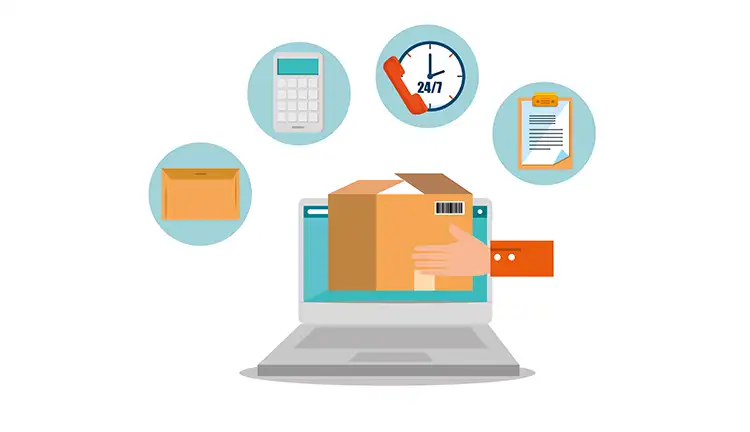
Integrating RPA with AI for seamless order processing is revolutionizing the way businesses handle their operations. In today’s fast-paced world, efficiency and accuracy are crucial, and this powerful combination of technologies is paving the way for streamlined and error-free order fulfillment. So, let’s dive into the exciting world where robots and artificial intelligence join forces to ensure a seamless customer experience.
Imagine a world where repetitive manual tasks are automated, and intelligent algorithms work tirelessly to process orders swiftly and accurately. With the integration of Robotic Process Automation (RPA) and Artificial Intelligence (AI), businesses can achieve just that. RPA automates mundane and rule-based tasks, freeing up human resources to focus on more complex and strategic activities. AI, on the other hand, empowers systems to learn, adapt, and make decisions based on data, enhancing the efficiency and accuracy of order processing. Together, RPA and AI create a dynamic duo that can handle order processing with unprecedented speed and precision.
By harnessing the power of RPA and AI, businesses can optimize their supply chain, reduce errors, and improve customer satisfaction. The seamless integration of these technologies enables real-time data analysis, predictive modeling, and intelligent decision-making, resulting in faster order processing, reduced costs, and increased operational efficiency. From order placement to fulfillment, every step is streamlined and automated, eliminating bottlenecks and ensuring a smooth and hassle-free experience for both businesses and customers.
In conclusion, the integration of RPA with AI is transforming order processing into a seamless and efficient process. By leveraging the capabilities of these technologies, businesses can achieve higher productivity, reduced errors, and improved customer satisfaction. As we embrace the future of automation and artificial intelligence, the possibilities for enhancing order processing are endless. So, buckle up and get ready to witness the power of RPA and AI in revolutionizing the way we process orders.
In today’s fast-paced business environment, integrating Robotic Process Automation (RPA) with Artificial Intelligence (AI) has become crucial for seamless order processing. By combining the automation capabilities of RPA with the cognitive abilities of AI, businesses can achieve greater efficiency and accuracy in handling orders. RPA can automate repetitive tasks such as order entry and data validation, while AI can analyze and interpret customer data to provide personalized recommendations and improve order fulfillment. This integration ensures a streamlined and error-free order processing system, resulting in enhanced customer satisfaction and increased operational efficiency.

Integrating RPA with AI for Seamless Order Processing
Integrating Robotic Process Automation (RPA) with Artificial Intelligence (AI) can revolutionize the order processing system for businesses. By combining the efficiency of RPA with the cognitive capabilities of AI, companies can streamline their order management operations and achieve seamless processing. In this article, we will explore the benefits and techniques of integrating RPA with AI for seamless order processing.
The Power of RPA and AI Integration
RPA involves the use of software robots or “bots” to automate repetitive tasks. These bots can perform various order processing activities such as data entry, invoice generation, and order tracking with exceptional speed and accuracy. On the other hand, AI empowers machines to mimic human intelligence, enabling them to understand, interpret, and respond to complex data and situations. By integrating RPA with AI, businesses can leverage the strengths of both technologies and create a highly efficient and intelligent order processing system.
Benefits of Integrating RPA with AI
Integrating RPA with AI offers numerous benefits for order processing. Firstly, it significantly reduces errors and improves accuracy. The AI component can analyze data patterns and make intelligent decisions, ensuring precise order processing. Secondly, the automation provided by RPA eliminates manual intervention, reducing the chances of delays and bottlenecks in the order fulfillment process. This results in faster order processing and improved customer satisfaction.
Furthermore, the integration of RPA and AI enables businesses to handle a large volume of orders effortlessly. The bots can work 24/7 without fatigue, ensuring uninterrupted order processing even during peak periods. Additionally, the cognitive capabilities of AI allow for intelligent order prioritization, ensuring that urgent orders are processed first. This helps businesses meet critical deadlines and deliver exceptional customer service.
Techniques for Integrating RPA with AI
To integrate RPA with AI for seamless order processing, businesses can follow several techniques. Firstly, they can use AI-powered chatbots to handle customer queries related to order status, delivery updates, and returns. These chatbots can understand natural language and provide accurate responses, reducing the workload on customer service teams.

Secondly, businesses can employ AI algorithms to analyze customer data and predict future order patterns. This information can be used to optimize inventory management, anticipate demand, and ensure timely order fulfillment. By combining AI-driven insights with RPA’s automation capabilities, businesses can achieve efficient inventory planning and minimize stockouts and overstock situations.
Moreover, businesses can integrate AI-powered optical character recognition (OCR) technology with RPA to automate the extraction of order information from documents. OCR can accurately extract data from invoices, purchase orders, and other documents, enabling seamless integration with the order processing system. This eliminates the need for manual data entry, saving time and reducing errors.
In conclusion, integrating RPA with AI offers significant advantages for seamless order processing. The combination of automation and cognitive capabilities enhances efficiency, accuracy, and customer satisfaction. By leveraging techniques such as AI-powered chatbots, predictive analytics, and OCR, businesses can transform their order processing operations and stay ahead of the competition. Embracing the power of RPA and AI integration is the key to achieving a seamless and optimized order management system.
Key Takeaways: Integrating RPA with AI for Seamless Order Processing
- Robotic Process Automation (RPA) and Artificial Intelligence (AI) can work together to enhance order processing.
- RPA automates repetitive tasks, while AI enables intelligent decision-making.
- Integrating RPA with AI reduces errors, improves efficiency, and speeds up order processing.
- Automated order snippets using HTML can streamline the process and ensure accuracy.
- The combination of RPA and AI enables businesses to provide seamless and fast order processing for improved customer satisfaction.
Frequently Asked Questions
Q1: How does RPA contribute to seamless order processing?
RPA, or Robotic Process Automation, plays a crucial role in streamlining order processing by automating repetitive tasks. With RPA, businesses can automate the entire order processing cycle, from order placement to fulfillment. The software robots can extract order details, validate them, update inventory systems, generate invoices, and even send order confirmations to customers.
By integrating RPA with AI, businesses can further enhance the efficiency of order processing. AI algorithms can analyze order data, detect patterns, and make intelligent decisions. For example, AI can identify fraudulent orders, recommend suitable upsell or cross-sell products, and even predict demand to optimize inventory management. By combining the power of RPA and AI, businesses can achieve seamless order processing with minimal manual intervention.
Q2: What are the benefits of integrating RPA with AI in order processing?
Integrating RPA with AI offers several benefits for order processing. Firstly, it improves accuracy and reduces errors. RPA ensures that order details are captured and processed accurately, minimizing the risk of manual errors. AI algorithms can analyze order data and make intelligent decisions, further enhancing accuracy and reducing the need for manual intervention.
Secondly, integrating RPA with AI speeds up order processing. By automating repetitive tasks, RPA significantly reduces the time taken to process orders. AI algorithms can analyze order data in real-time, enabling faster decision-making. This results in quicker order fulfillment, leading to improved customer satisfaction.
Q3: Can RPA and AI handle complex order processing scenarios?

Yes, RPA and AI are capable of handling complex order processing scenarios. RPA can be programmed to handle various order types, including customized orders, bulk orders, and orders with multiple delivery addresses. The software robots can extract relevant information from order forms, validate it, and update the necessary systems.
AI algorithms can analyze complex order data and make intelligent decisions. For example, if an order requires approval from multiple stakeholders, AI can route the order through the appropriate channels, ensuring timely approval. Additionally, AI can identify potential bottlenecks in the order processing workflow and suggest optimizations to improve efficiency.
Q4: How does integrating RPA with AI impact order accuracy?
Integrating RPA with AI significantly improves order accuracy. RPA eliminates the risk of manual errors by automating data entry and validation processes. The software robots can extract order details accurately from various sources, such as online forms or emails, and update the necessary systems without any discrepancies.
AI algorithms further enhance order accuracy by analyzing order data and making intelligent decisions. For example, AI can identify potential errors or inconsistencies in the order details and prompt the necessary corrections. By minimizing errors, businesses can avoid costly mistakes and provide a seamless order processing experience to their customers.
Q5: Are there any challenges in integrating RPA with AI for order processing?
While integrating RPA with AI offers numerous benefits, there are some challenges to consider. One challenge is the need for proper data integration. RPA and AI systems require access to accurate and up-to-date data to perform effectively. Ensuring seamless data flow between different systems can be a complex task.
Another challenge is the need for skilled resources to develop and maintain the integrated RPA and AI solutions. Businesses need professionals with expertise in both RPA and AI technologies to design, implement, and monitor the integrated system. Additionally, ensuring data security and privacy is crucial when integrating RPA and AI, as order processing involves sensitive customer information.

Final Summary: Revolutionizing Order Processing with the Power of RPA and AI
In this rapidly evolving digital era, businesses are constantly seeking ways to streamline their operations and enhance customer experiences. The integration of Robotic Process Automation (RPA) with Artificial Intelligence (AI) has emerged as a game-changer when it comes to seamless order processing. By automating repetitive tasks and leveraging AI capabilities, companies can achieve unprecedented efficiency, accuracy, and customer satisfaction.
The combination of RPA and AI brings a host of benefits to order processing. With RPA, mundane and time-consuming tasks such as data entry, invoice generation, and order tracking can be automated, freeing up valuable time for employees to focus on more strategic and customer-oriented activities. AI, on the other hand, enables intelligent decision-making, predictive analytics, and natural language processing, allowing businesses to gain valuable insights, detect patterns, and deliver personalized experiences to customers.
By integrating RPA with AI, businesses can achieve a seamless order processing system that not only reduces errors and processing time but also enhances the overall customer journey. Orders can be processed swiftly and accurately, inventory levels can be optimized in real-time, and customer queries can be resolved promptly. This results in improved operational efficiency, increased customer satisfaction, and ultimately, a competitive edge in the market.
In conclusion, the integration of RPA with AI is revolutionizing order processing, enabling businesses to automate repetitive tasks, make intelligent decisions, and provide exceptional customer experiences. Embracing this powerful combination allows companies to stay ahead of the curve in a fast-paced digital landscape. So, it’s time for businesses to harness the potential of RPA and AI, and embark on a journey towards seamless order processing and business success.